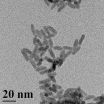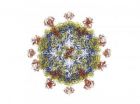(Press-News.org) Research published recently in PLoS One delivers new insight about rapid toxin evolution in venomous snakes: pitvipers such as rattlesnakes may be engaged in an arms race with opossums, a group of snake-eating American marsupials. Although some mammals have long been known to eat venomous snakes, this fact has not been factored into previous explanations for the rapid evolution of snake venom. Instead, snake venom is usually seen as a feeding, or trophic, adaptation. But new molecular research on snake-eating opossums by researchers affiliated with the American Museum of Natural History suggests that predators factor into the rapid evolution of snake venom.
"Snake venom toxins evolve incredibly rapidly," says Robert Voss, curator in the Department of Mammalogy at the American Museum of Natural History. "Most herpetologists interpret this as evidence that venom in snakes evolves because of interactions with their prey, but if that were true you would see equally rapid evolution in toxin-targeted molecules of prey species, which has not yet been seen. What we've found is that a venom-targeted protein is evolving rapidly in mammals that eat snakes. That suggests that venom has a defensive as well as a trophic role."
Several groups of mammals are known for their ability to eat venomous snakes, including hedgehogs, mongooses, and some opossums. Opossums, which belong to the marsupial family Didelphidae, consist of about one hundred known and several dozen undescribed species. Most of these opossums live in Central and South America, although there is one representative in the north that is familiar to those who spend time outside at night: the Virginia opossum.
Some didelphids, including the Virginia opossum, are known to eat rattlesnakes, copperheads, and some species of tropical pitvipers known as lanceheads. All of these pitvipers have venom containing dozens of highly toxic compounds, including many that attack blood proteins, causing massive internal hemorrhaging in nonresistant warm-blooded prey species, mainly rodents and birds.
The new research came out of a previous phylogenetic study of marsupials, published as a Bulletin of the American Museum of Natural History, that suggested unusually rapid evolution in one gene among a group of snake-eating opossums. The rapidly evolving gene codes for von Willebrand's factor, an important blood-clotting protein that is known to be the target of several snake-venom toxins. The association of rapid evolution in a venom-targeted gene among just those opossums known to eat pitvipers was the essential clue that prompted further study.
"This finding took us by surprise," says Sharon Jansa, associate professor in the Department of Ecology, Evolution and Behavior at the University of Minnesota and a Museum research associate. "We sequenced several genes—including the one that codes for von Willebrand Factor (vWF)—to use in a study of opossum phylogeny. Once we started to analyze the data, vWF was a real outlier. It was evolving much more rapidly than expected in a group of opossums that also, as it turns out, are resistant to pitviper venom."
The recently published research demonstrates that the rate of replacement substitutions (nucleotide changes that result in amino-acid changes) is much higher than the rate of silent substitutions (nucleotide changes that have no effect on the protein) in the von Willebrand Factor gene among pitviper-eating opossums. Typically, high rates of replacement substitutions means that the gene is under strong, sustained natural selection. That only happens in a few evolutionary circumstances.
"Most nucleotide substitutions have little or no effect on protein function, but that doesn't seem to be the case with vWF in these venom-resistant opossums," says Jansa. "The specific amino acids in vWF that interact with toxin proteins show unexpectedly high rates of replacement substitutions. These substitutions undoubtedly affect protein function, suggesting that the vWF protein can no longer be attacked by these snake toxins."
"It is so uncommon to find genes under strong positive selection, that the exceptions are really interesting and often conform to one evolutionary circumstance when two organisms are coevolving with each other," says Voss. "We've known for years that venom genes evolve rapidly in snakes, but the partner in this arms race was unknown until now. Opossums eat snakes because they can."
INFORMATION:
The National Science Foundation funded this research.
END
BUFFALO, N.Y. -- Quantum dots made from cadmium and selenium degrade in soil, unleashing toxic cadmium and selenium ions into their surroundings, a University at Buffalo study has found.
The research, accepted for publication in the journal Environmental Science and Technology, demonstrates the importance of learning more about how quantum dots -- and other nanomaterials -- interact with the environment after disposal, said Diana Aga, the chemistry professor who led the study.
Quantum dots are semiconductor nanocrystals with diameters of about 2 to 100 nanometers. ...
Howard H. Collens, attorney at the probate and estate planning law firm of Galloway and Collens, PLLC, spoke at a professional training seminar on The Probate Process From Start to Finish for Paralegals, sponsored by the Institute for Paralegal Education (IPE).
The seminar, which took place on June 7, 2011, aimed to increase the understanding and effectiveness of paralegals, legal assistants and legal secretaries during the legal process which may be required after a person dies. Howard H. Collens spoke about topics related to the probate process including the ethical ...
HOUSTON -- (July 18, 2011) -- Rice University scientists have defined the structure -- down to the atomic level -- of a virus that causes juvenile diarrhea. The research may help direct efforts to develop medications that block the virus before it becomes infectious.
The new paper by Professor Yizhi Jane Tao, postdoctoral researcher Jinhui Dong and their colleagues was published in today's online edition of the Proceedings of the National Academy of Sciences.
Tao's Rice lab specializes in gleaning fine details of viral structures through X-ray crystallography and computer ...
PRONicaragua recently announced the organization of the premier investment forum titled Nicaragua, Let's Grow Together!, which will showcase the country's sustainable growth in various economic sectors and its competitive advantages as an attractive destination for foreign direct investment (FDI).
The event will take place on August 16th and 17th in Managua, Nicaragua, and will focus on specialized sectors such as apparel, footwear, food processing and manufacturing, as well as world-class bilingual business process outsourcing (BPO) services. Participants will be coming ...
The Westie Foundation of America (WFA) announced
today preliminary findings in two major studies involving the health of West Highland White Terriers also
known as Westies. Findings in these and other studies of Westies and other dogs
may hold answers for similar human conditions like Inflammatory Bowel Disease (IBD). The studies are
jointly funded by the WFA and the AKC Canine Health Foundation (CHF).
In one study, researchers are looking at the role of a mucosal gene driving inflammation Canine IBD, a
chronic intestinal disorder that creates a bacterial-driven ...
We all make numerous decisions everyday; unconsciously or consciously, sometimes doing it automatically with little effort or thinking and yet, at other times, we agonize for hours over another. Why do we make these choices – be it from deciding what to have for lunch or whether to say yes to that job offer halfway round the world. Sometimes we make choices on our own, and at other times, the choice is made for us. Exercising control (by making choices) is adaptive and now, a new study, which will be published in an upcoming issue of Psychological Science, a journal of ...
What does a passionate founder of a domestic violence charity do when he wants to raise awareness and promote a daily fitness program? Rich Tola, Founder and Chairman of the yoga-inspired nonprofit, The Boulevard Zen Foundation, would say "We're going on a 30,000 mile fundraiser, visiting all 50 states in 100 days. That's 100 cities in 100 days, producing trivia-filled travelogue videos including fat burning workouts that are based on yoga". Ambitious? Yes. Impossible? "Certainly not," says the former Wall Streeter turned actor-filmmaker whose film, ...
FINDINGS: Using a new in vivo screening system, Whitehead Institute researchers have identified a protein in a key metabolic pathway that is essential in estrogen receptor (ER)-negative breast cancer. When the expression of the gene that codes for this protein—phosphoglycerate dehydrogenase or PHGDH—is suppressed in tumors and cell lines with an overabundance of the protein, the rate of cellular growth declines markedly.
RELEVANCE: PHGDH is overexpressed in approximately 70% of ER-negative breast cancer patients. Patients with ER-negative disease respond poorly to treatment ...
PHILADELPHIA — Almost everyone has experienced one memory triggering another, but explanations for that phenomenon have proved elusive. Now, University of Pennsylvania researchers have provided the first neurobiological evidence that memories formed in the same context become linked, the foundation of the theory of episodic memory.
The research was conducted by professor Michael Kahana of the Department of Psychology in the School of Arts and Sciences and graduate student Jeremy R. Manning, of the Neuroscience Graduate Group in Penn's Perelman School of Medicine. They ...
PHILADELPHIA - Years after a single traumatic brain injury (TBI), survivors still show changes in their brains. In a new study, researchers from the Perelman School of Medicine at the University of Pennsylvania suggest that Alzheimer's disease-like neurodegeneration may be initiated or accelerated following a single traumatic brain injury, even in young adults.
Over 1.7 million Americans suffer a traumatic brain injury each year, and beyond the immediate effects, growing evidence demonstrates that a single TBI may initiate long-term processes that further damage the brain. ...


